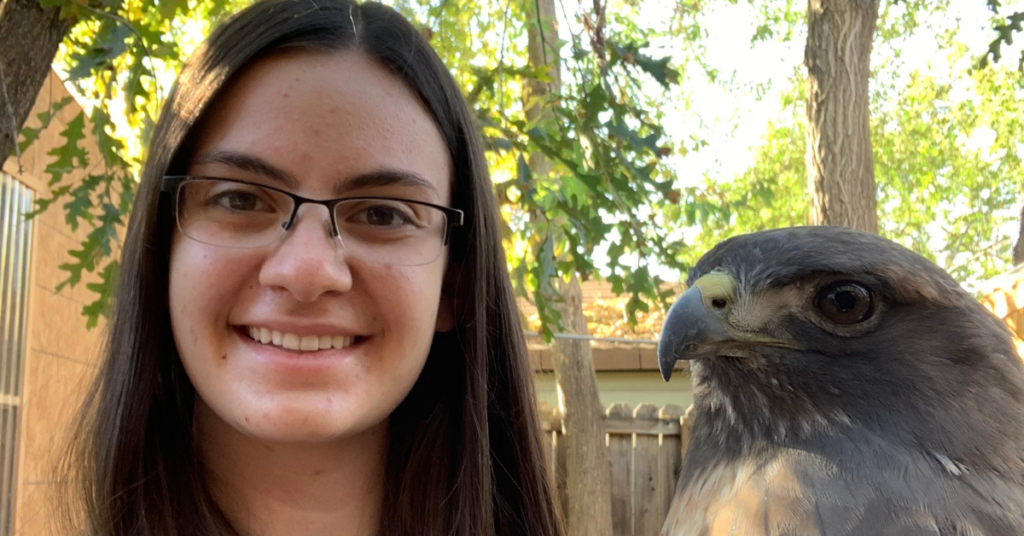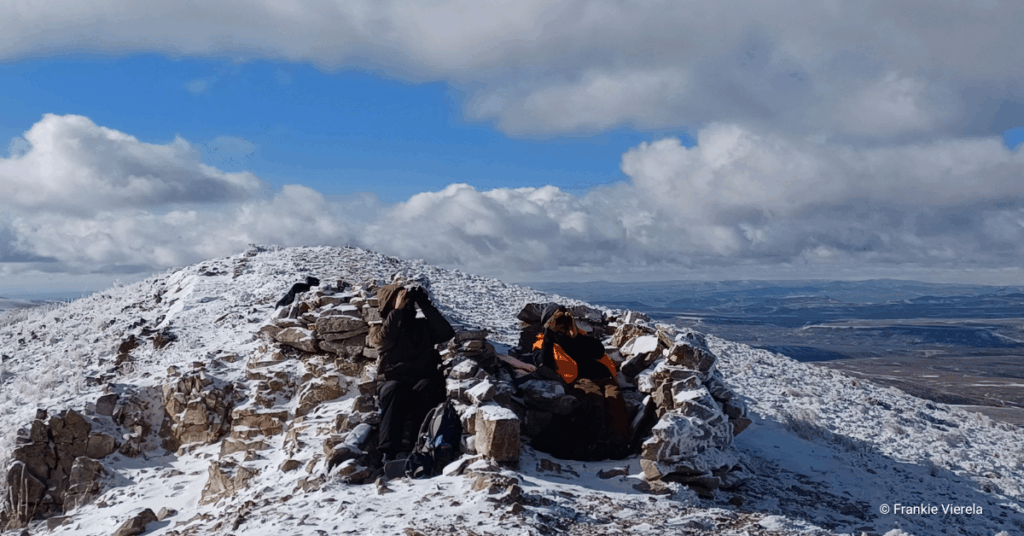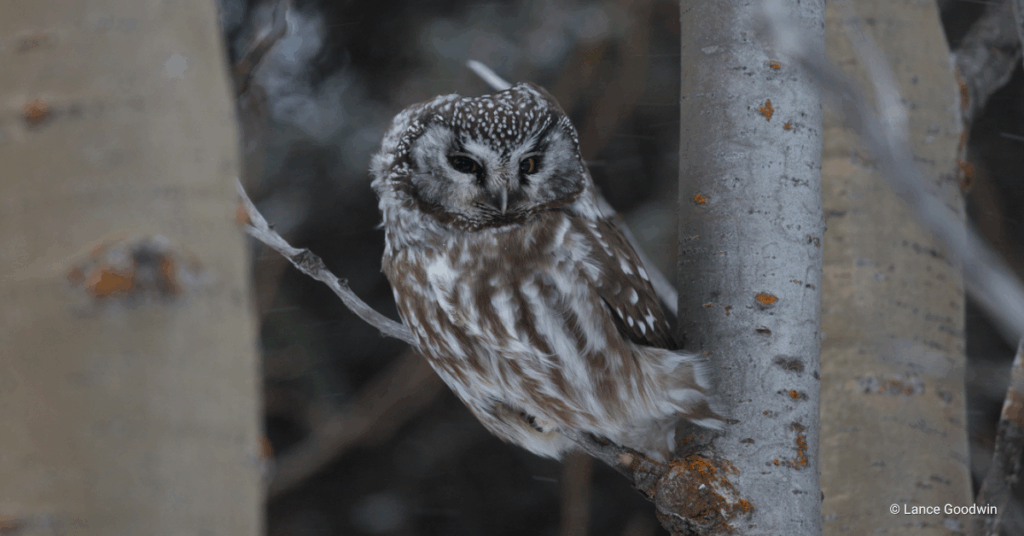Today we are sad to say see you later to one of our longest volunteers. Tessa McNamee has been volunteering with HWI since she was in 6th grade, putting 11 years into caring for our Raptor Ambassadors. As you can imagine, 11-year-olds are not allowed to handle the birds, so Tessa spent her time cleaning our raptor enclosures or mews. It took Tessa 6 years of volunteering until she was eligible to be trained to work with the birds on glove.
Now Tessa is heading off to pursue her Ph.D. at the University of Washington. Tessa is particularly passionate about experimental condensed matter physics. At UW, she will be working alongside a group that studies the electronic properties of 2-dimensional materials at extreme conditions. “It’s like taking a very thin piece of foil and cooling it down as cold as you can possibly imagine and seeing how it behaves differently from room temperature foil or a thicker piece of metal,” Tessa explains. Her hope is that this experience will allow her to pursue a career as a research scientist in industry.
Join us in wishing Tessa the best of luck in her new adventure, and a huge thank you for her years of service! Keep reading to learn more about Tessa and their experience volunteering with HWI.
How long have you been volunteering with HawkWatch International?
11 years
How did you get started volunteering with HWI?
In 6th grade, I was looking for a volunteer project to join as part of an award I was working towards at my school. My neighbor Janet was a birdcare volunteer at the time, and she suggested I come help her clean out the bird’s mews to get the hours I needed for the award. I fell in love with the birds, despite only being able to do the cleaning, and just kept coming!
What is your “spark bird?”
Peregrine Falcons! I remember reading “My Side of the Mountain” when I was in elementary school, and I thought it was so cool that the main character could handle a raptor. When HawkWatch International got Goose, I was so so excited. I’ve loved Peregrines ever since, and I just think she is the coolest bird ever. Peregrines have so many incredible adaptations that make them marvels of physics and engineering, and the more I’ve learned about physics, the more their streamlined, powerful physiques impress me.
What do you do outside of volunteering for HWI?
I am a full-time student. I graduated this spring with my BS in physics at the University of Utah and will be continuing my education and academic training as a physics Ph.D. student at the University of Washington. On the side, I enjoy reading, hiking, playing video games, and spending time with my partner.
What is your favorite moment from volunteering?
When I turned 18 and was finally able to start handling the birds, a bunch of docents held a surprise party at the birdhouse to celebrate with me. I was so surprised, and Janet and Tana (another docent who I did birdcare with) showed me how to hold Kotori. Since I hadn’t been able to hold the birds for 7 years, that was a really exciting moment!
Why should people care about conserving raptors?
Of course, raptors are beautiful and powerful birds, and I think that anyone who is able to see one up close quickly sees how they are deserving of respect and care. A more scientific reason, though, is the significance of raptors to a healthy ecosystem. Raptors are an indicator species and thus amazing measures of the health of our environment. They can alert us of problems and can serve as barometers of the success of protective measures, which is very valuable for the health of our whole planet.




